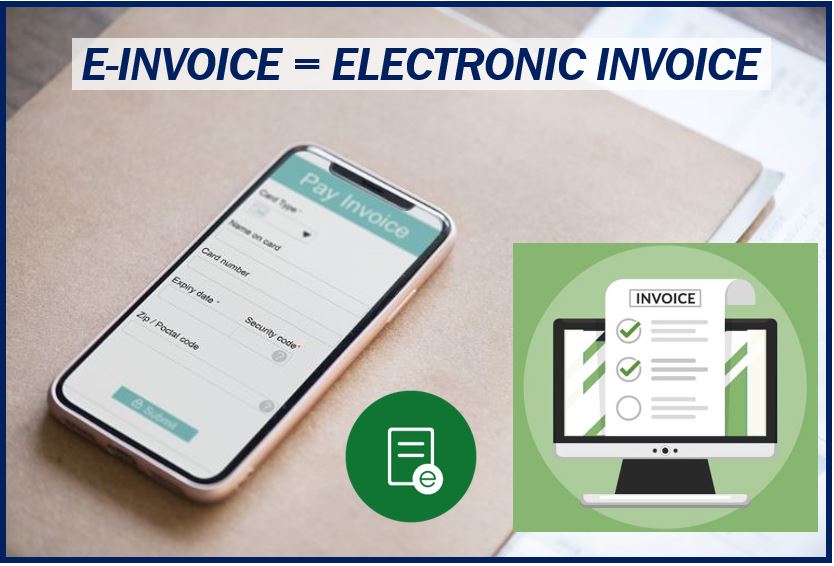 E-invoicing or electronic invoicing refers to the creation of an invoice in a computer, tablet, or smartphone, and sending it electronically. In other words, invoicing customers via the Internet.. The e-invoice can further be analysed digitally in the form of PDFs. It can also be printed out if legal or other processes are necessary.
E-invoicing or electronic invoicing refers to the creation of an invoice in a computer, tablet, or smartphone, and sending it electronically. In other words, invoicing customers via the Internet.. The e-invoice can further be analysed digitally in the form of PDFs. It can also be printed out if legal or other processes are necessary.
An e-invoice has the same purpose, function, and validity as a conventional paper invoice. The only difference is that the e-invoice is sent to the receiver electronically, which today means via the Internet. Paper invoices were sent either by traditional post, fax, or by hand.
Although e-invoicing did not really take off in a big way until the turn of the century, its concept has been around for quite a few decades. Company executives and accountants started talking about a paperless office and e-invoicing type procedures in the 1960s.
Over the past few years, there has been a significant increase in online business activites, i.e., more transactions have been carried out electronically. More and more governments have adopted the feature of e-invoicing. This has become a major challenge to IT staff and tax employees regarding overall e-invoicing operations.
Digital literacy and e-invoicing success
Digital literacy is a term we read about more frequently these days. According to Wikipedia, it means:
“An individual’s ability to find, evaluate, and compose clear information through writing and other mediums on various digital platforms.”
Levels of digital literacy can determine whether e-invoicing becomes widely and successfully adopted throughout a whole country. Making people aware of the features of the e-invoicing system can be very fruitful for an economy. Relying on old methods to carry out taxation can be cumbersome and time-consuming, and can significantly slow down a nation’s economic growth.
Individuals and businesses may also find adapting for a better economy a challenging ordeal. All stakeholders need to acknowledge the importance of e-invoicing and its requirements.
E-invoicing software – what to consider
When deciding which e-invoicing software to install into your system, consider the following:
- Seek software that automates the sending and receiving of invoices. Some systems focus on just sending or receiving.
- You need a system that operates over an extensive, open network.
- You should also be aware that there are some e-invoicing regulations that may depend on where you live, so be sure to double check your invoicing methods adhere to your local laws.
- Make sure that the software supports every type of invoice format. Not all of them do.
- If you are involved in exports and imports, you will need support for multiple currencies. Different jurisdictions have their own set or rules and regulations.
- Would you need to overhaul your current system? Ideally, you should opt for software that integrates with your system seamlessly.
- How detailed and relevant to your team members is the software’s analytics capabilities? Business intelligence is worth gold in today’s marketplace.
E-invoicing – benefits
For sellers and purchasers, e-invoicing offers the following benefits:
- Lower costs. You will be able to get the same amount of work done with fewer employees.
- Reduced payment cycles.
- Checking that all numbers are right and match up (account reconciliation) is easier and faster
- Electronic systems have fewer errors, especially if they have been set up properly.
- Studies have shown that there is a lower incidence of fraud in electronic invoicing systems compared to paper invoicing.
- With better clarity and faster processes, the suppler-client relationship benefits significantly.

